Combat aircraft. "Aunt Yu": strange, but useful
Let's go in order.
I will not sin at all against the truth, saying that "Aunt Yu" became one of the first multi-purpose aircraft in the world.
Yes, the details are a strong and difficult thing. And the thing is in the numbers after the usual abbreviations.
Corrugated sheathing, fixed gear, slow and unpretentious - this was the plane we used to think of as Ju.52. More precisely, about Ju.52 / Зm. Three-engine version (there was a single-engine).
A strange and somewhat archaic design, however, this aircraft has made so much that it is difficult to compete with many real combat aircraft.
Ours is story started in 1933, when the modification Ju.52 / 3m-g appeared, which became the first really large-scale. Engines from Pratt and Whitney were replaced by BMW-132A-1. In general, actually unlicensed "Hornet" from the same "Pratt and Whitney" capacity 660 l / s.
The Ju.52 / 3m-ge had a top speed of 290 km / h. This, of course, was a minuscule, but for the civilian model the maximum speed was not so important, but the fact that the plane was easily converted into a transport or bomber was very valuable.
This played a role, because before the start of commercial sales, Junkers received an order to remake the aircraft into a bomber.
October 1933. The so-called auxiliary bomber squadron is being created by the newly formed air commissariat. This can generally be called as the formation of a bomber aviation Luftwaffe, and the Luftwaffe itself.
In general, according to the initial plan, it was planned to arm the entire bomber aircraft with a Dornier Do.11 aircraft, and the Junkers Ju.52 was considered only as an interim solution.
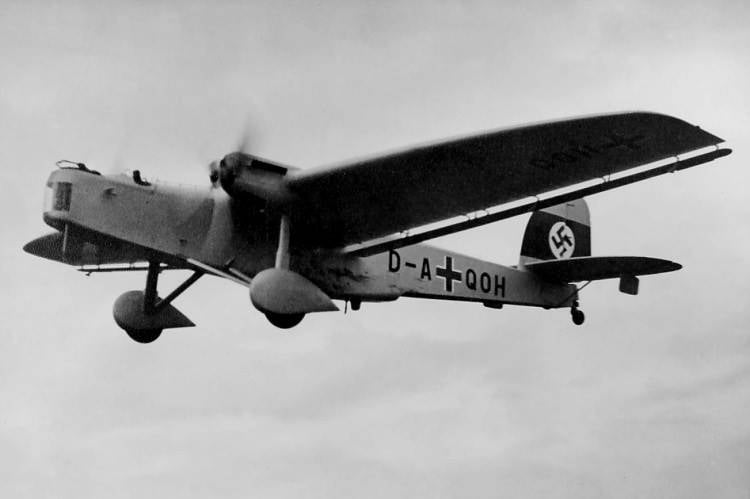
But it turned out that Dornier was not able to teach how to fly its plane, it went into a series with delays and problems, so much so that by the reporting date 1 of March 1933, the bombing squadron had three Do.11c, but the Junkers Ju.52 was 24.
It so happened that the Junkers was ready to rivet the 52 at a completely Stakhanov pace, which is what happened in practice.
And everything turned out to be very simple. Converting the transport Ju.52 / 3m-g3e into a bomber was a snap.
The hatch just cut through the fuselage and an open turret with one MG-15 machine gun was installed in it.
To protect against attacks from below, there was a “basket” partially retractable in flight with another MG-15. This shooting point could be pulled into the fuselage by half by hand.
The “basket” point was attached to the glazed cockpit of the scorer, which was located between the bomb bay. There were three bomb bays: two in front and one in the back. Each bomb bay contained a DSAC / 250 cassette for 10 kg bombs or two 50 bombs.
Thus, the bomb load was 1 500 kg. The fuel reserve in the 2 475 l provided a tactical range of 500 km at a cruising speed of 245 km / h at an altitude of 1000 m.
It is clear that all these alterations very easily rolled back to the transport version.
The transport variant Ju.52 / 3m-g3 was the first to take part in the hostilities. Of course, it was Spain. 20 Junkers made an 1936 flight in July-August 461, sending 7350 infantry, artillery pieces and machine guns from Africa to Spain. At the same time, aircraft made 461 flights, often overloaded. Another 5455 person was transported on 324 flights in September. And in October, another 1157 people were transported in 83 flights.
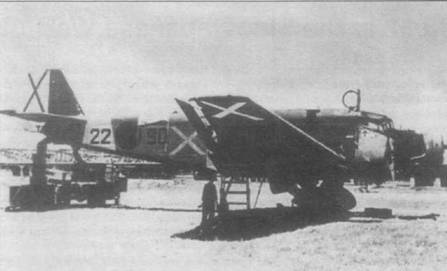
Hitler rightly remarked:
While the transport "Junkers" transported from France replenishment into the army of Franco, their bomber colleagues accepted their baptism. The first use occurred on August 14: Ju.52 / 3m-g3 bombed the Getafe airfield near Madrid.
And on August 27 and 28, Madrid became the target of Ju.52 / 3m, and it turned out to be a very difficult situation. It turned out that both Ju.52 / 3m with bombs and Ju.52 / 3m with passengers flew to Madrid at the same time, as Lufthansa continued to operate passenger flights to Spain.
In general, the combat use of Ju.52 / 3m-g3е and g4е showed that the aircraft turned out to be successful. And the real large-scale construction began and in parallel the modification of the aircraft.
Ju.52 / 3m-g5 has become even more versatile. The plane received a rear wheel instead of a “crutch”, a ski landing gear for the winter period and floats. Defensive armament changed, instead of a “basket”, which greatly degraded aerodynamics, they put two MG-15 machine guns on the sides, and the “basket” was removed. Ju.52 / 3m-g5е received BMW-132T-2 engines with 830 hp power, the exhaust gases of which were used in the anti-icing system.
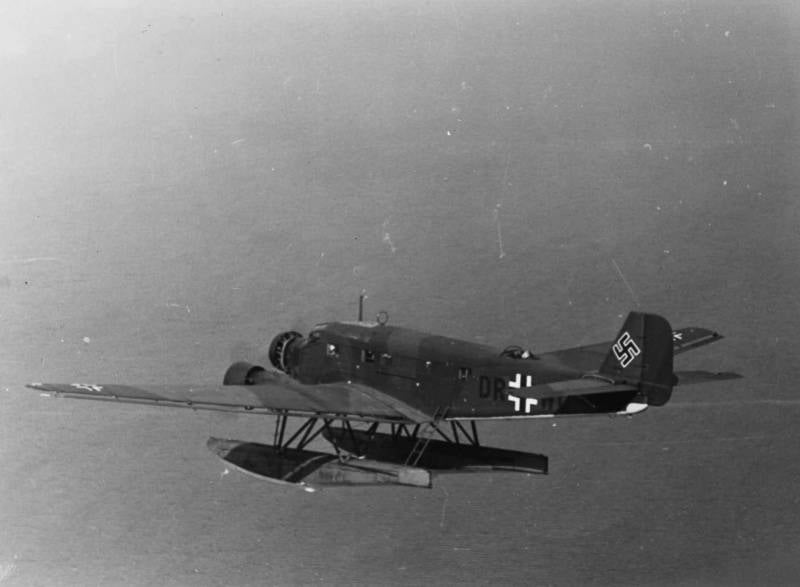
And, of course, the leadership of the Luftwaffe was waiting for the moment when all these innovations could be effectively applied. And it waited. In the Weserubung operation, the Junkers proved to be just wonderful, having thrown six companies of paratroopers, one landing and airborne battalion and three infantry battalions to Norway. In addition, the aircraft carried six companies of airfield maintenance personnel, the headquarters of the aviation forces, the headquarters of the infantry regiment and more than 168 tons of fuel.
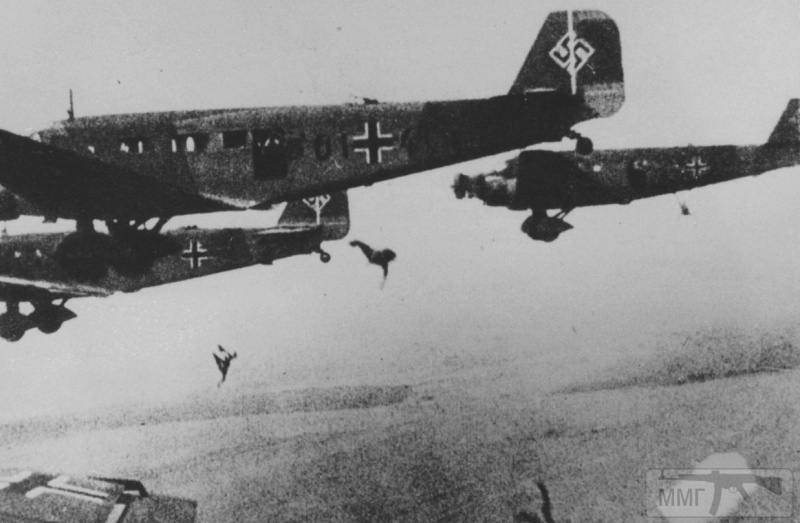
Among other things, by the beginning of the active phase of World War II, Ju.52 / 3m mastered the profession of a mine minesweeper. On the basis of Ju.52 (g4е, g5е, g6е, g7е and g8е models) six squadrons of "mine seekers" were formed, for which the letters MS were used in the specifications.
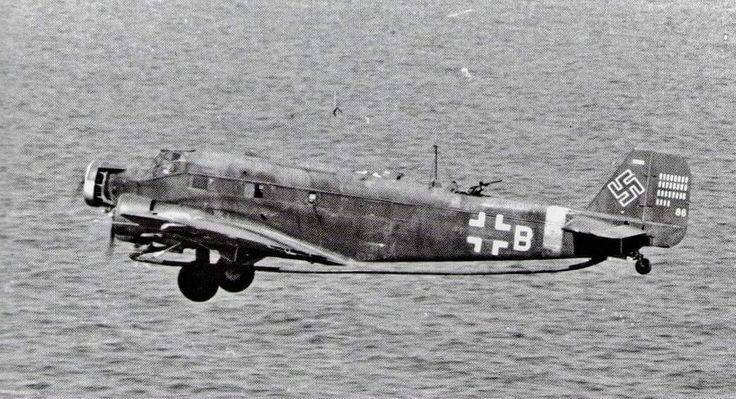
Most Ju.52 / 3m (MS) was equipped with a large duralumin ring on the struts under the wing and fuselage. The winding in the ring was powered by an auxiliary motor, providing current in 300 amperes. Other Ju.52 / 3m (MS) were equipped with KK-Gerat containers with 30 small charges for trawling acoustic mines. Most of the minesweeper squadrons had equally both.
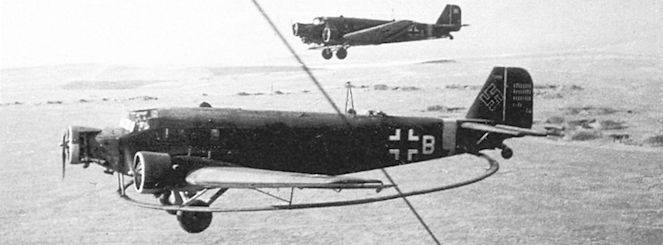
It was applied like this: three Ju.52 / 3m with magnetic windings flew in a wedge formation. Behind them flew Ju.52 / 3m with subversive charges. The flight speed was usually 200 km / h. The height depended on the depth of the sea. The optimal distance to the mine was 40 m, so if the depth was 30 m, then the planes flew at an altitude of 10 m. The application showed high efficiency of such trawling, but losses began immediately, as the enemy began to “educate” the Junkers pilots.
Since the minesweepers were appreciated in the Luftwaffe and Kriegsmarine, measures were taken to strengthen defensive weapons. Instead of the top machine gun, a circular turret with a MG-151 / 20 cannon was installed, and the side MG-15 were replaced by large-caliber MG-131. The minesweeper became a very "toothy" aircraft.
But the gun did not go as standard. We decided that it would be greasy. And in the modification Ju.52 / 3m-g8е, instead of the top MG-15 machine gun, MG-131 was installed.
In general, for the re-equipment of Ju.52 / 3m in solving various problems, seven standard “field conversion kits” were used that could be installed in operational units.
That is, the aircraft could be changed to fulfill specific tasks, and the use of such a set was indicated by an additional letter.
E - the aircraft was equipped for loading, securing and unloading / ejecting containers.
F - landing aircraft.
H - training aircraft.
N is a cargo plane.
R is a connected plane.
S - ambulance.
St - aircraft for the transport of technical personnel.
In the 1942 year, Ju.52 / 3m-g9е, a glider towing vehicle, went into the series. We took into account the experience of European landing operations, significantly strengthening the landing gear and regularly putting the towing system itself. Another subspecies in the already decent list of “professions”.
The finest hour "Aunt U" came in January 1942, when the Red Army surrounded the 100-thousandth group of the Wehrmacht near the town of Demyansk. In order to establish supplies for the encircled forces, the German command took away planes even from Rommel in Africa, which unwittingly accelerated the collapse of the Africa corps.
But, nevertheless, the Germans managed to create an air bridge and during the period from February 21 to May 18, eleven air transport groups made 14 445 flights, transported 24 303 tons of cargo, 3142 tons of fuel, 15 445 people and evacuated 22 093 wounds.
This is not to say that everything was smooth and smooth. Yes, our army did not then have experience in such operations, because the Demyansky Cauldron can rightly be counted as the Wehrmacht and the Luftwaffe.
However, 265 aircraft lost by the Luftwaffe during the operation - this is also a lot. It is worth noting that the proper conclusions were made by our command, and when the Germans set out to help the encircled Paulus army in Stalingrad in the same way, you yourself know how the matter ended.
The Luftwaffe losses near Stalingrad are estimated at about 500 aircraft, of which 266 were Ju.52 / 3m. It is very difficult to recover from such losses.
Nevertheless, the Ju.52 / 3m reached the end of the war as an airborne transport aircraft, all the more so since its production was on the increase, due to the fact that it began to be collected in decent quantities at French enterprises. The German command connected the Amio concern to the case, and the process began.
Thanks to the work of the French, the assembly of Ju.52 / Зm in 1943 increased to 900 aircraft, with the 321 machine made in France and the Hungarian allies assembled around 30.
The last production version of Aunt U, Ju.52 / 3m-g14е, was put into production in late autumn of the 1943 year and was produced until the middle of the 1944 year. This was the last modification of the aircraft, and then production ceased.
In total, from the beginning of the 1939 year, 3225 military aircraft were produced, and the total release of Ju.52 / Зm was 4845.
Compared to the fighters that were produced by tens of thousands, this is not much. Nevertheless, the aircraft became the main means of air cargo delivery for the Third Reich. North Africa, Demyansk, Stalingrad, Crimea, Kamyanets-Podilskyi, where the 1st tank the army of the Wehrmacht, Breslau ... In general, "Aunt Yu" has become a kind of symbol of last hope for surrounded German soldiers. And the farther towards the end of the war, the more this happened.
The latest case of the massive successful use of Ju.52 / 3m was the offensive operation in the Ardennes, "Watch on the Rhine." The weather was not the most favorable, but nevertheless the Junkers were able to throw airborne assaults in the rear of the American troops.
It is clear that at the end of the war the pilots were no longer those at the beginning, and the landing was thrown over a larger territory than planned. Nevertheless, in the process of reaching their paratroopers, they were able to "make a noise."
In general, Ju.52 / 3m went through the “from bell to bell” war. And it became the same paradox as Po-2, since it completely did not meet any requirements of the time. Nevertheless, even in this case, the aircraft brought tangible benefits.
LTX Ju.52 / Зm-g7е
Wingspan, m: 29,30
Length, m: 18,90
Height, m: 5,55
Wing area, м2: 110,00
Weight, kg
- empty aircraft: 6 500
- normal takeoff: 10 500
Engines: 3 x BMW-132T-2 x 830 l. from.
Maximum speed km / h: 285
Cruising speed, km / h: 250
Practical range, km: 1090
Maximum rate of climb, m / min: 175
Practical ceiling, m: 5 900
Crew, prs: 3
Payload: 18 passengers / landing or 1500 kg cargo
Armament:
- one 7,92-mm machine gun MG-15 or 13-mm MG-131 on the upper turret
- one MG-15 above the cockpit
- two MG-15 or MG-131 in the side windows
- 10 bombs on 50 kg bombs or 2 bombs 250 kg.
It is surprising when looking at the LTH that “Aunt Yu” was able to fly through the whole war, and even not as a target, but bringing real benefits. By the way, our plane also worked after the war.
After the war ended, the aircraft was manufactured in France (before the 1947 year) and Spain (before the 1952 year), about 1000 machines that worked until the 70 of the last century were produced.
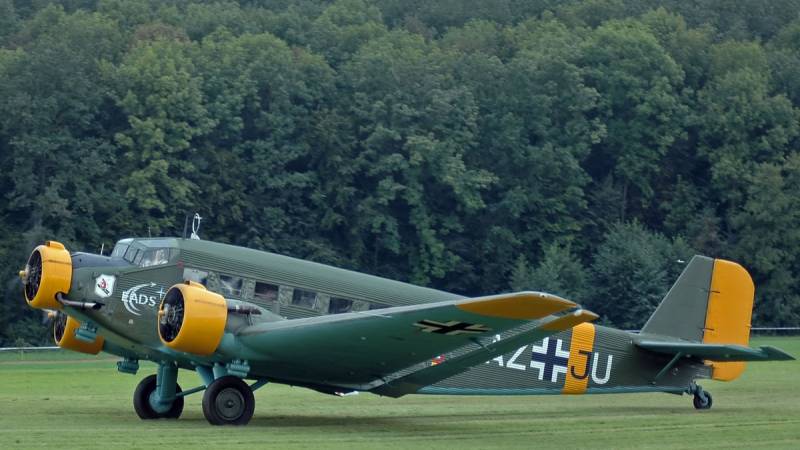
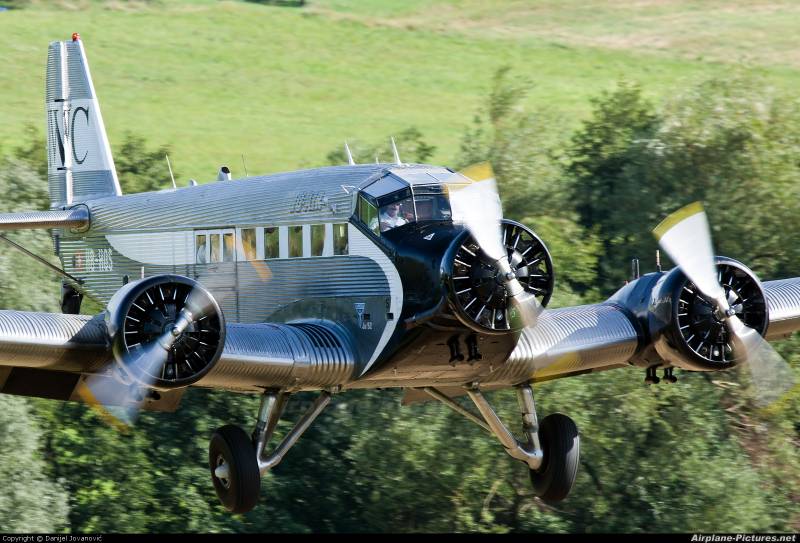
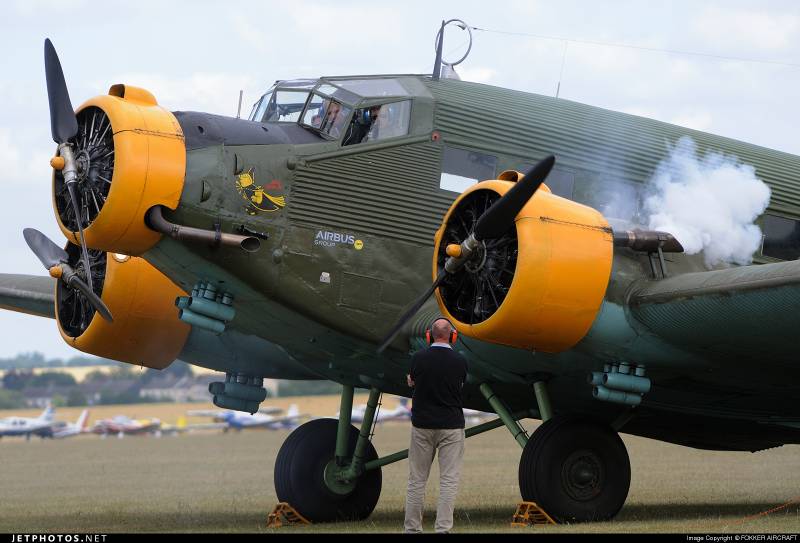
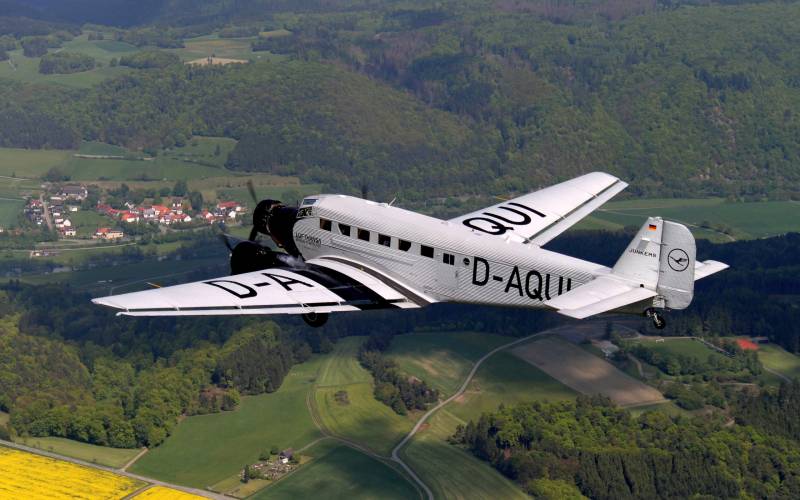
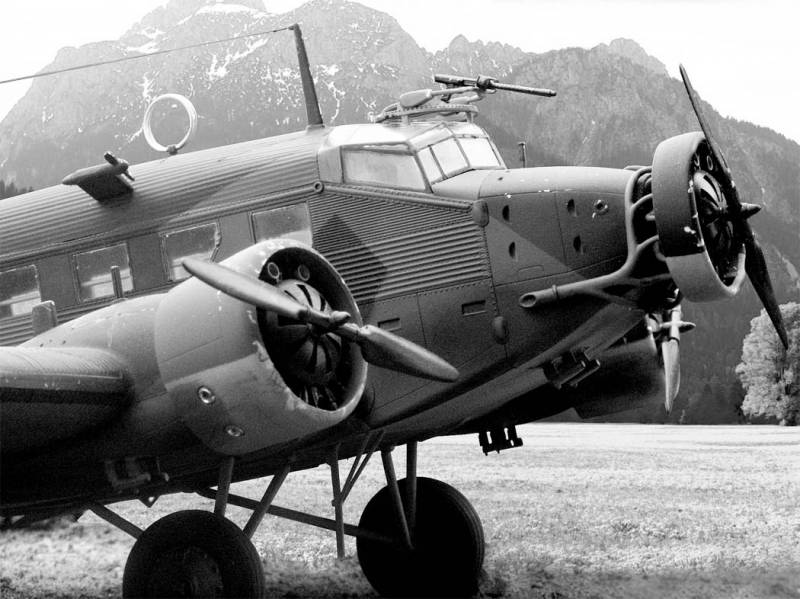
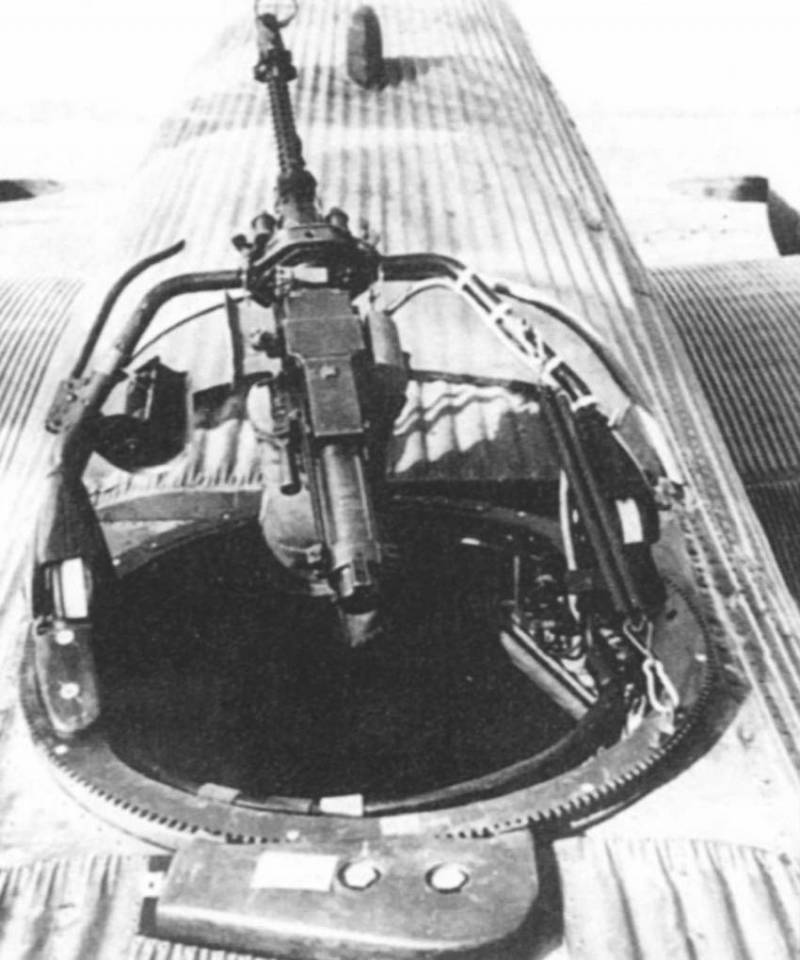
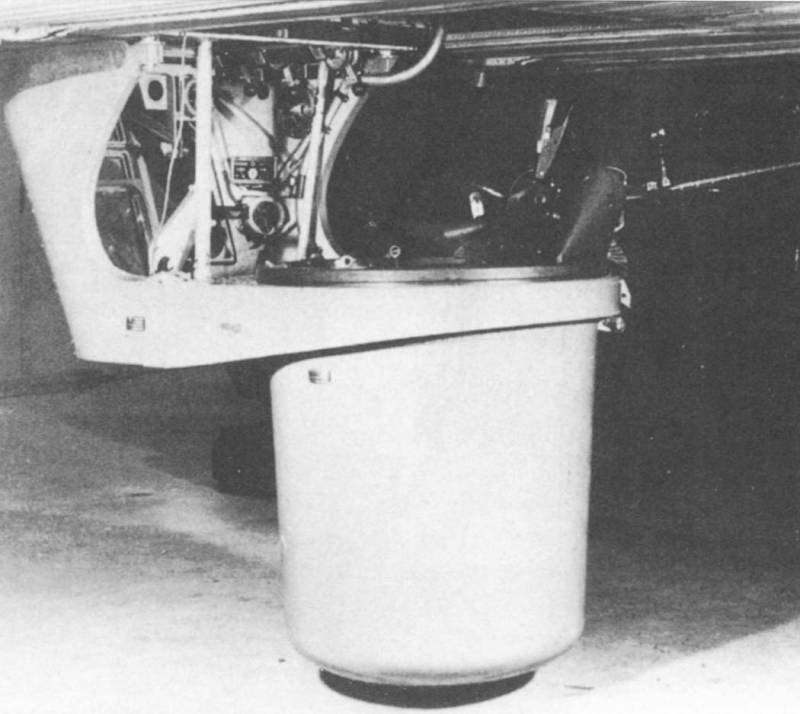
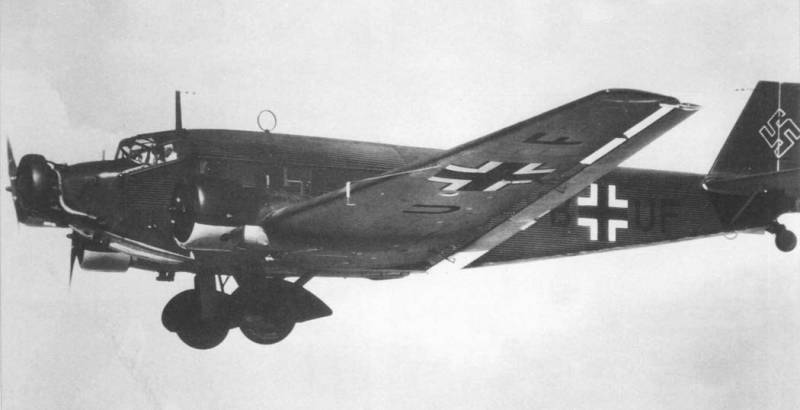
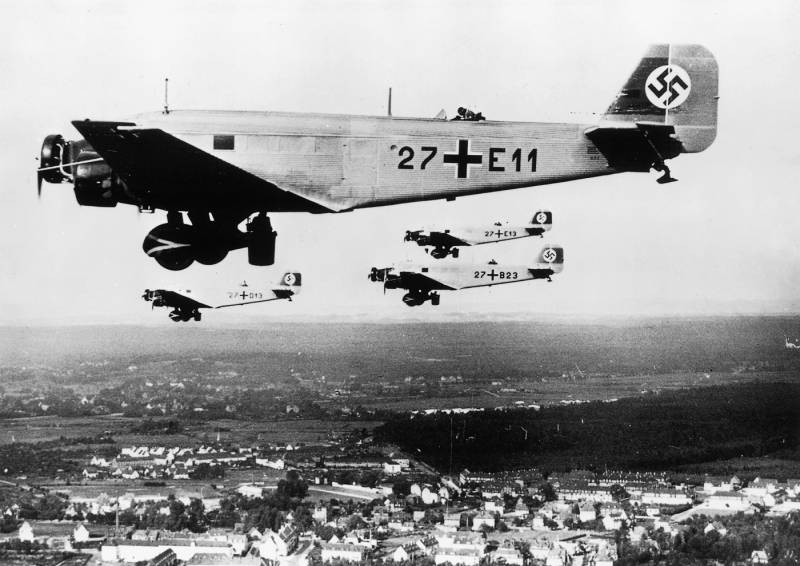
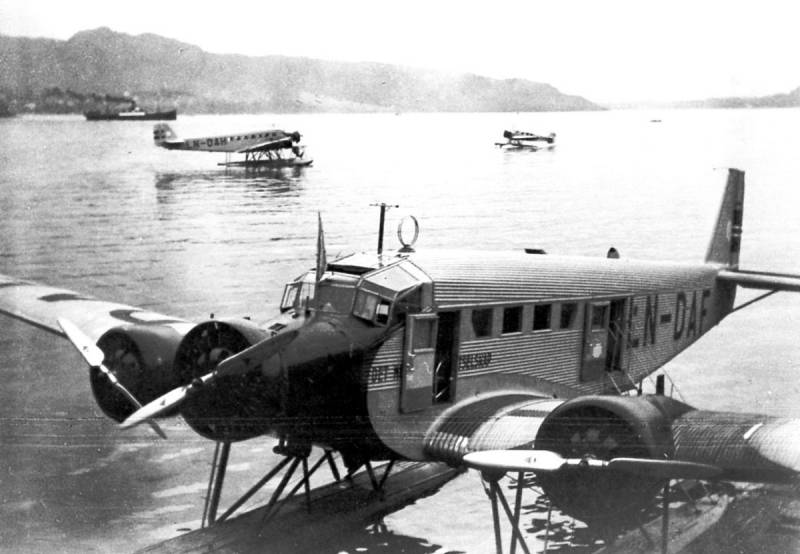
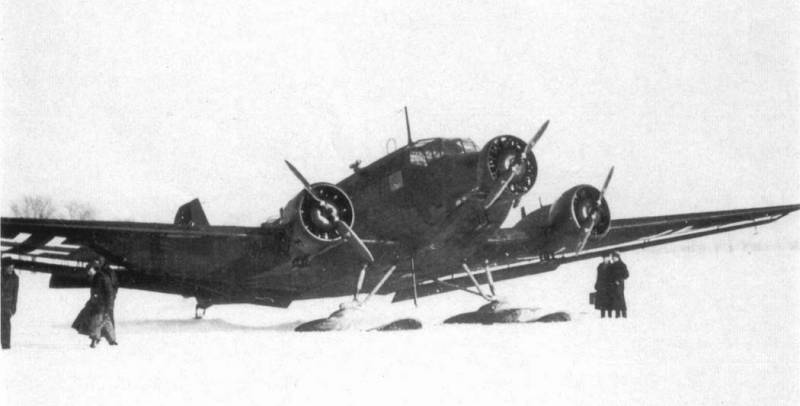
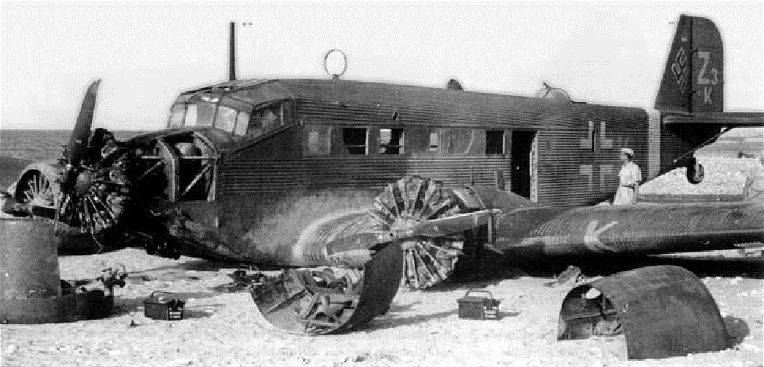
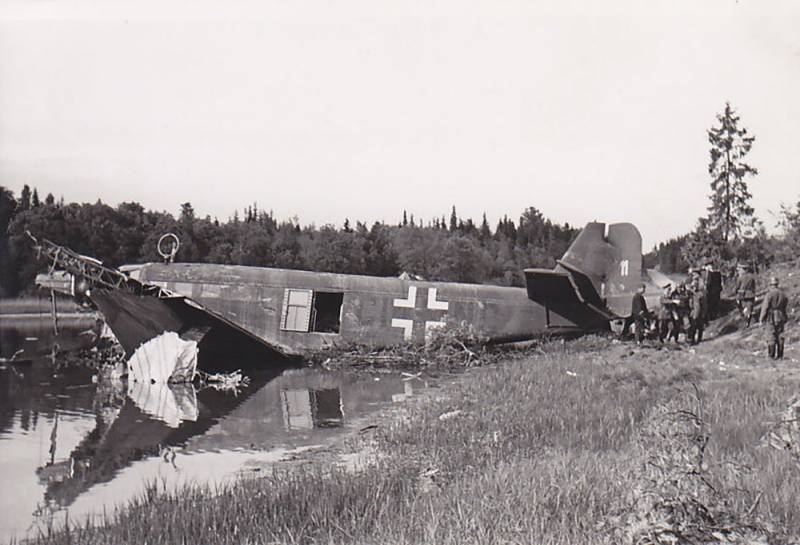
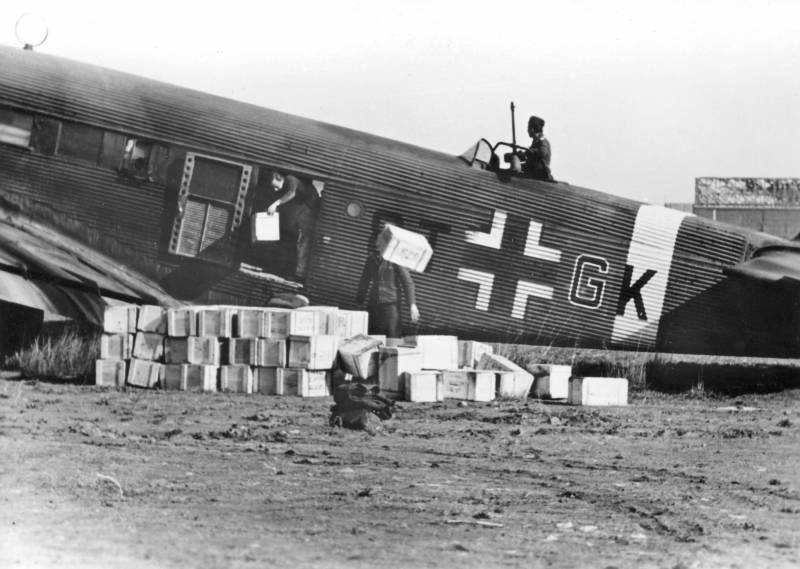
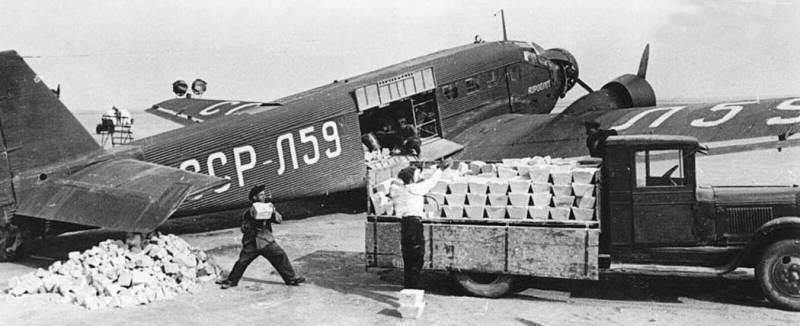
Information